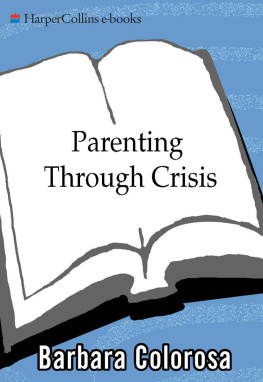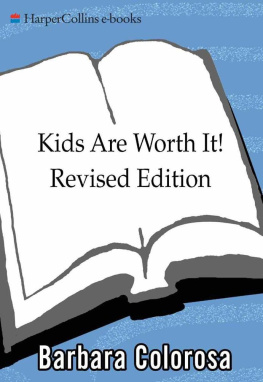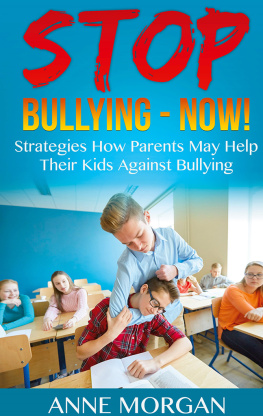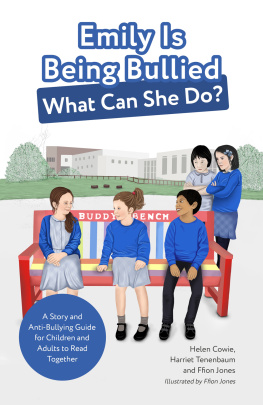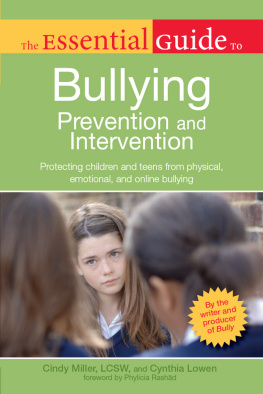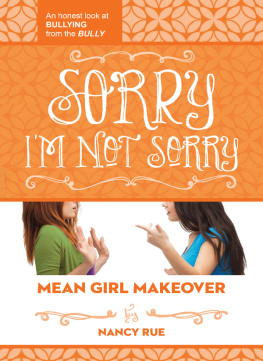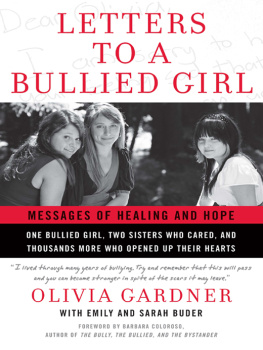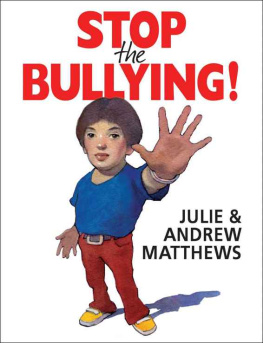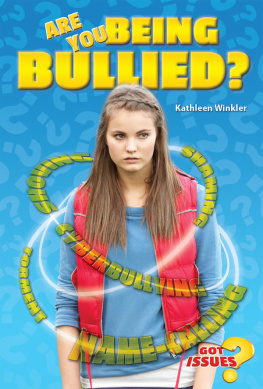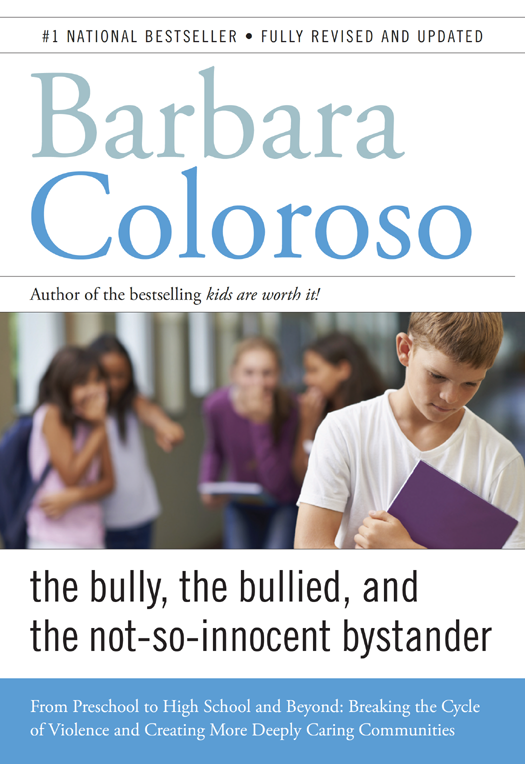Barbara Coloroso - Bully, the Bullied, and the Not-So Innocent Bystander: From Pre-School to High School and Beyond: Breaking the Cycle of Violence and Creating More Deeply Caring Communities
Here you can read online Barbara Coloroso - Bully, the Bullied, and the Not-So Innocent Bystander: From Pre-School to High School and Beyond: Breaking the Cycle of Violence and Creating More Deeply Caring Communities full text of the book (entire story) in english for free. Download pdf and epub, get meaning, cover and reviews about this ebook. year: 2015, publisher: HarperCollins Canada, genre: Home and family. Description of the work, (preface) as well as reviews are available. Best literature library LitArk.com created for fans of good reading and offers a wide selection of genres:
Romance novel
Science fiction
Adventure
Detective
Science
History
Home and family
Prose
Art
Politics
Computer
Non-fiction
Religion
Business
Children
Humor
Choose a favorite category and find really read worthwhile books. Enjoy immersion in the world of imagination, feel the emotions of the characters or learn something new for yourself, make an fascinating discovery.
- Book:Bully, the Bullied, and the Not-So Innocent Bystander: From Pre-School to High School and Beyond: Breaking the Cycle of Violence and Creating More Deeply Caring Communities
- Author:
- Publisher:HarperCollins Canada
- Genre:
- Year:2015
- Rating:4 / 5
- Favourites:Add to favourites
- Your mark:
Bully, the Bullied, and the Not-So Innocent Bystander: From Pre-School to High School and Beyond: Breaking the Cycle of Violence and Creating More Deeply Caring Communities: summary, description and annotation
We offer to read an annotation, description, summary or preface (depends on what the author of the book "Bully, the Bullied, and the Not-So Innocent Bystander: From Pre-School to High School and Beyond: Breaking the Cycle of Violence and Creating More Deeply Caring Communities" wrote himself). If you haven't found the necessary information about the book — write in the comments, we will try to find it.
The groundbreaking #1 national bestseller from Barbara Coloroso, one of the worlds most trusted parenting educators.
First published over a decade ago, The Bully, the Bullied and the Bystander quickly became the definitive guide to bullying prevention and intervention, providing real solutions for a problem that affects young people all over the world. Now, in this thoroughly updated and expanded book, Coloroso helps you recognize the characteristic triad of bullying: the bully who perpetrates the harm; the bullied, who is the target (and who may become a bully); and the not-so-innocent bystanderspeers or siblings who either watch, participate in the bullying or look away, and adults who see bullying as teasing, not tormenting, and as boys will be boys or as girl drama, not the predatory aggression that it is. In this book you will learn:
Drawing on her decades of work with troubled youth and her wide experience with conflict resolution and restorative justice, Barbara Coloroso offers practical and compassionate solutions and gives parents, caregivers, educators andmost of allyoung people the tools to break this cycle of violence.
Barbara Coloroso: author's other books
Who wrote Bully, the Bullied, and the Not-So Innocent Bystander: From Pre-School to High School and Beyond: Breaking the Cycle of Violence and Creating More Deeply Caring Communities? Find out the surname, the name of the author of the book and a list of all author's works by series.


